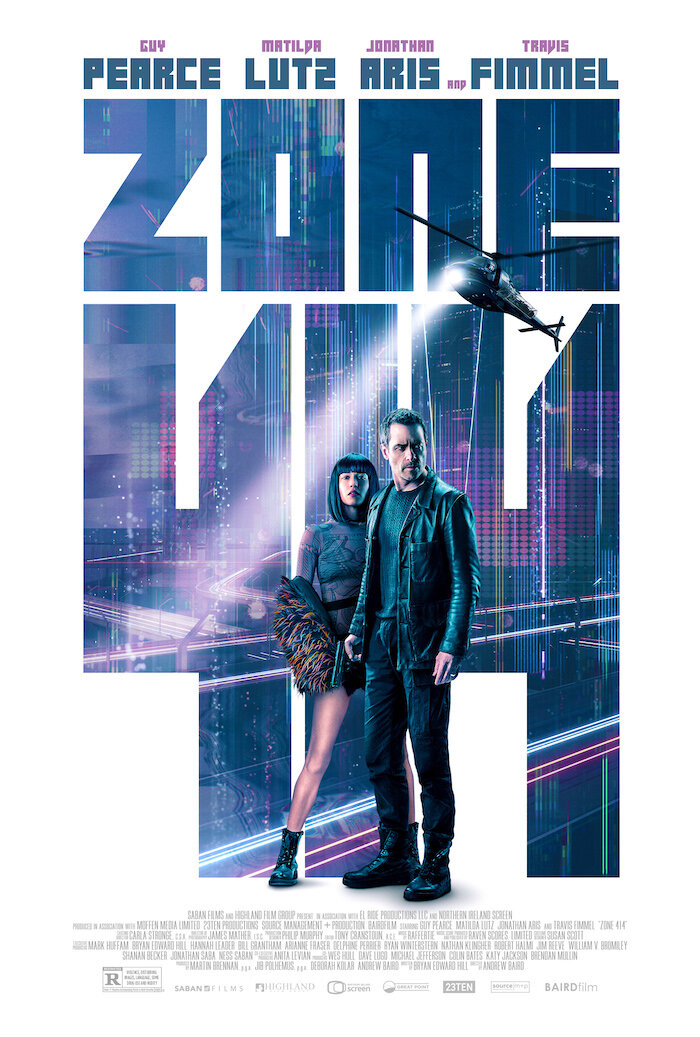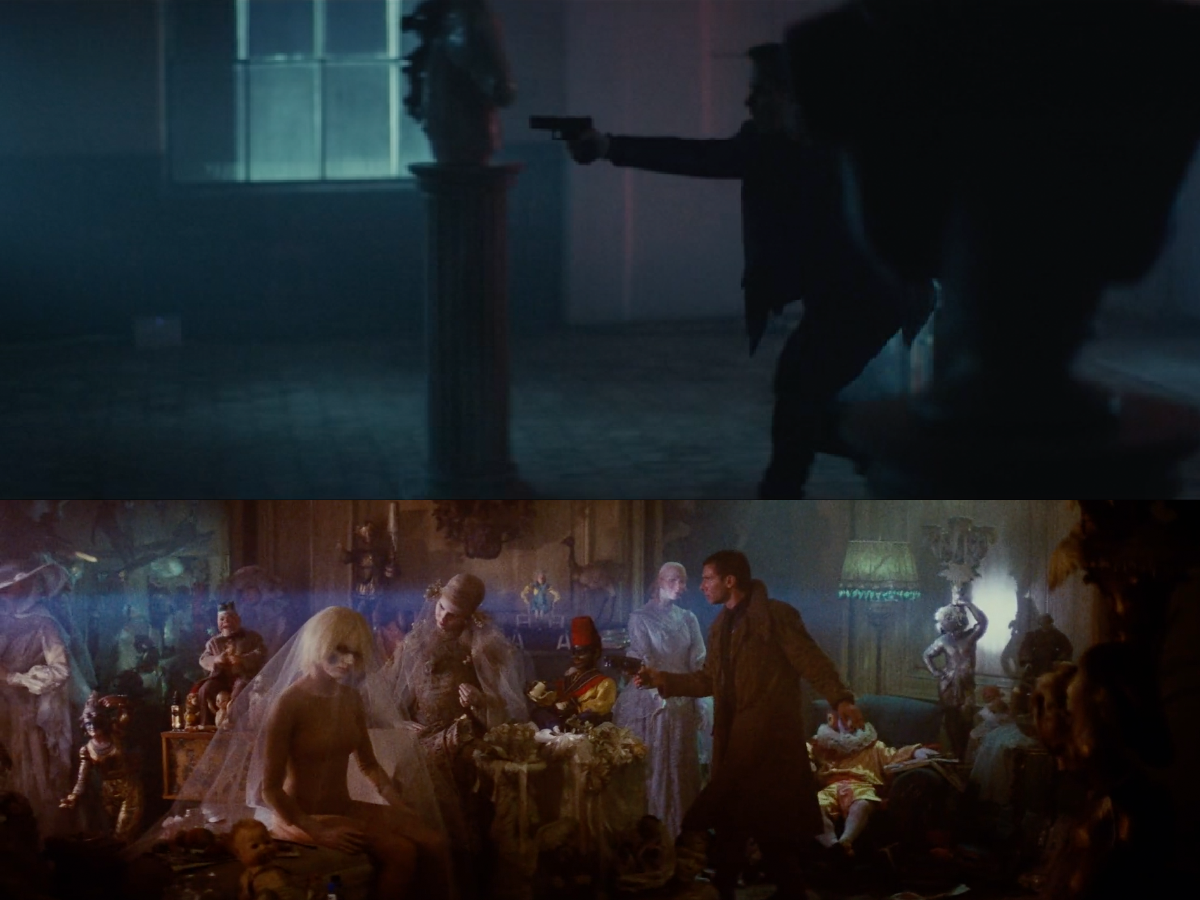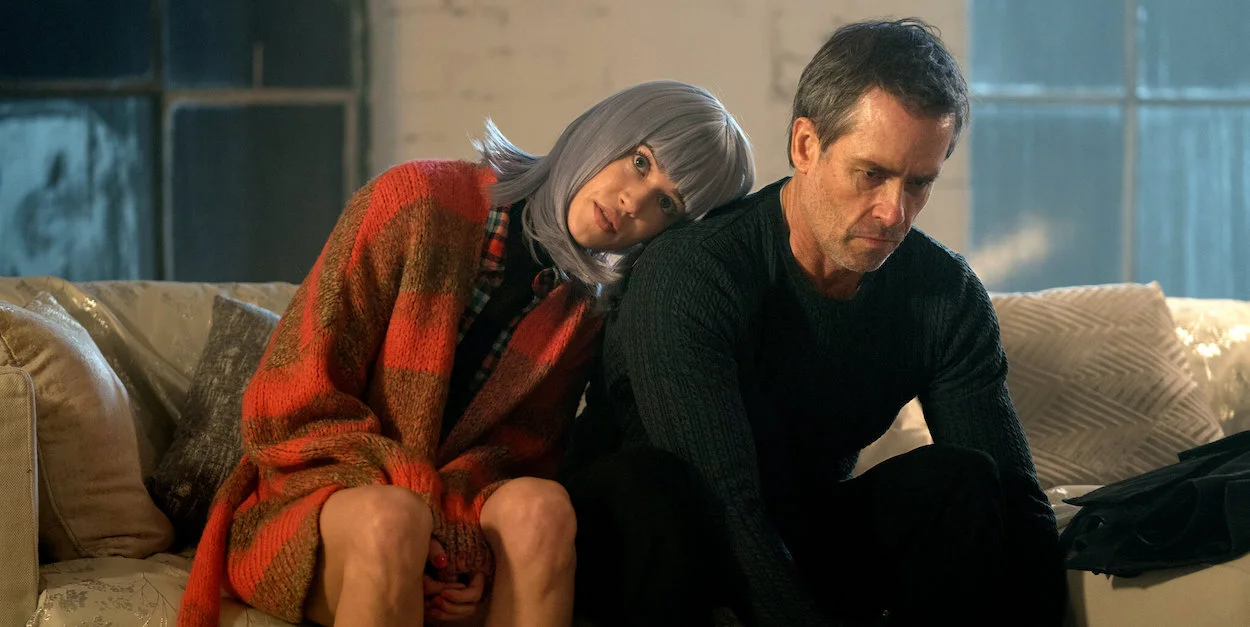Review: ZONE 414 (2021)
ZONE 414 (2021) Jóhannes Haukur Jóhannesson, Matilda Anna Ingrid Lutz
There’s been a fairly recent rise in genre filmmaking of what I would call “cover versions” of beloved classics. These aren’t remakes, and they aren’t necessarily ripoffs—usually because they are done out of admiration and made long after the financial cache on which most ripoffs try to cash-in. Movies like Neil Marshall’s DOOMSDAY, Joe Begos’ THE MIND’S EYE, Mickey Keating’s DARLING, Jennifer Reeder’s KNIVES AND SKIN, James Mather and Steve Saint Leger’s LOCKOUT, and more basically take a very specific title and change a few things so it goes beyond homage and inspired to a variation on the original that the filmmakers clearly loved. Director Andrew Baird’s ZONE 414 (from a script by Bryan Edward Hill) is blatantly a cover version of BLADE RUNNER, a sci-fi detective story about android autonomy and what it means to be human while utilizing very specific lighting set-ups, character archetypes, and a mixture of analog and futuristic technology. Certainly there have been many works that can fit most if not all of those descriptions (the vast majority of the cyberpunk subgenre, for example), but ZONE 414 is unabashedly modeled directly after Ridley Scott’s 1982 opus with only minor variations. While there are some strong elements in it—particularly in some performances and a few of the kernels of original ideas—ZONE 414 lives far too much in the shadow of the far superior film to really justify its existence.
In the near future, the Veidt Corporation is a monolith of capitalism due to the brilliance of its founder and leader, Marlon Veidt (Travis Fimmel), who has created androids that can serve all manner of purposes for humankind. In exchange for his inventions that bolster the economy in numerous ways, Veidt has been granted a piece of land known as “Zone 414” which is an area where humans and androids can interact without much government (or law enforcement) supervision to help Veidt improve his inventions while fulfilling all manner of nasty desires of the wealthy visitors.
When Marlon’s daughter, Melissa (Holly Demaine), goes missing in Zone 414, his brother Joseph (Jonathan Aris) seeks out a person to locate her in the city of automatons. Ex-cop David Carmichael (Guy Pearce) is contracted to scour the cybernetic playground of the rich and artificial to find the missing scion. The Veidts provide David with a guide in the form of Jane (Matilda Anna Ingrid Lutz), an android who is having her own set of identity issues…not to mention someone who may be out to kill her.
The duo work together to meet with power brokers of Zone 414, like high society pimp Royale (Olwen Fouéré) and lower society fixer George (Ned Dennehy), to find the missing girl and figure out who are puppets and who are the ones pulling the strings.
ZONE 414 doesn’t add much new in storytelling or filmmaking. The vast majority of it feels like something audiences have seen before—because they have. Not just in BLADE RUNNER, or BLADE RUNNER 2049, but also A.I.: ARTIFICIAL INTELLIGENCE, EX MACHINA, GHOST IN THE SHELL, and more that essentially hold a mirror up to humanity in the form of the near-human machine, wrapped up in detective stories amid questions of power, agency, social strata, and more. This doesn’t necessarily mean it would be bad—for example, Marshall’s DOOMSDAY (which is 2/3 ESCAPE FROM NEW YORK and 1/3 THE ROAD WARRIOR, almost exactly) is a hoot because of cool design and fun action sequences. Baird’s film has some nice looking shots, but they also tend to be the ones closest to aping Jordan Cronenweth’s cinematography from BLADE RUNNER. The action is very stilted and the characters are all under written.
It’s kind of admirable that Baird and company attempted to do a cover of BLADE RUNNER on a much tighter budget, but that doesn’t just translate to flatter f/x of this near future world. There are not many characters involved over all, and few of them expand beyond tired tropes of the scuzzy pimp, the tarnished knight, the doll that wants to be a real girl, the machinesmiths that are less human than the machines they make, etc. And the comparisons are furthered by the costuming and set designs that directly echo that Cold War mix of Pop Art and neon futurism that was the aesthetic for both BLADE RUNNER films. It’s unclear why the filmmakers wanted to make this—they knew they’d be compared (unfavorably) to the movies by Scott and Villeneuve as they overtly invite such observations. They don’t have much new to say on any of the themes and not much new to add in terms of story or character or visuals. ZONE 414 feels more like a film school assignment to make something “in the vein of” as an exercise in understanding formalism than anything else.
But, like most movies, ZONE 414 isn’t completely without merit. Matilda Anna Ingrid Lutz (who is incredible in 2017’s amazing REVENGE) turns in a strong performance as Jane.
Yes, it’s a well-worn archetype of the inhuman character grappling with emotions and identity. But Lutz infuses the android with the right amount of hope on top of her despair and fear to make Jane far more compelling than written.
Pearce is a good actor and does what he can with this, though there’s no real reason for him to have a weird New York accent or that world weary Raymond Chandler “former cop who saw too much and now is in it for the money but actually is an honorable man” figure. But he still is a terrific performer that does more with his physicality than the limp dialogue provides. Fimmel’s botched plastic surgery faced Marlon is a nice bit of aristocratic sociopathy, even if it’s old hat; similarly Aris has an otherworldly aura about him that would be more impactful in a better movie.
One thing that stands out negatively is yet another example that movies don’t need to keep using the overhead drone shot of a car driving alone down the road. It’s unclear why this nod to THE SHINING (footage from which was used, ironically enough, at the end of BLADE RUNNER) persists in most lower budget pictures, but it’s not as impressive or cinematic as folks seem to think; it’s not establishing production value at this point, it’s just pointing out that people had access to a drone for a day or two. Filmmakers, please, I beg of you: stop using this technique in your work. Please.
While there are noticeable silver linings deserving of praise, they are so few and far in between (buried under territory that’s been covered repeatedly for over 40 years) that it takes an effort to appreciate them. It’s almost guaranteed that Baird and company love BLADE RUNNER and wanted to do their own sort of cover of it in the form of ZONE 414. But it’s unclear what the upshot would have been—at best seen as a nice tribute to the movie film they enjoy so much? There is a sense of style and design, but it’s made difficult by how much is cribbed from superior works. Perhaps this is all a dry run or proof of concept to use for future projects? Whatever the case, it’s hard to argue that folks should check out ZONE 414 when versions that are better on almost every level are still available to watch.







